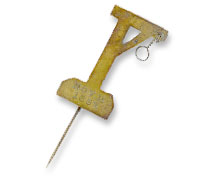The brief narrative of the Haymarket Affair given above is based on accounts of the events produced by several 20th century historians. It draws most heavily upon Paul Avrich's 1984 book The Haymarket Tragedy, Henry David's 1936 book (revised edition 1958), The History of the Haymarket Affair, and Philip Foner's edition of the Autobiographies of the Haymarket Martyrs. In creating their narratives, historians like Avrich, David, and Foner make use of the documents and artifacts that survive from the period.
Things that we regard as artifacts today, were in their own time practical objects: union banners, police handcuffs, and even souvenirs. Similarly, what we now consider historical documents were created originally to serve an immediate purpose: to convey "news," capture information, or to express a viewpoint or a belief. As time passes such everyday things outlive their original purposes and take on a new usefulness as historical evidence. Many of these objects and documents find their way into museums and libraries, where they are preserved for future generations and become essential evidence for describing and understanding the past.
Historians study, authenticate, and analyze this evidence, and then organize it and try to make sense of it. Like a judge or member of a jury in a trial, the historian also interprets and evaluates each document and artifact and renders a judgment on its relative reliability and worth.
|
 Gallows pin. | ||
| |||
